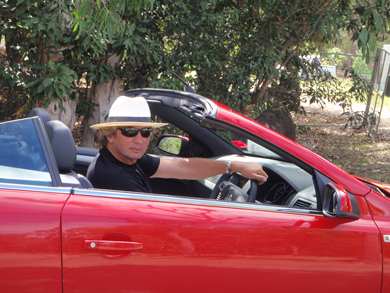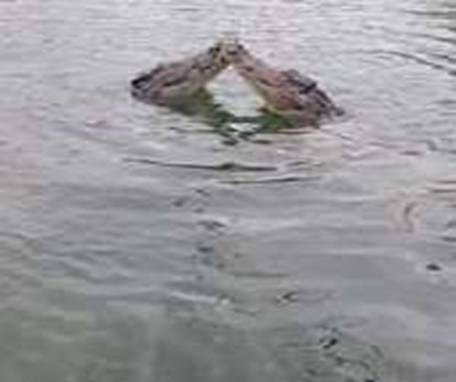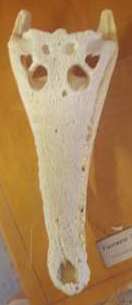BLUE WATER RALLY - AUSTRALIA PORT DOUGLAS CROCS

|
16.29.130S 145.27.606 Saturday 6th
September Port
Anahi with the navy blue mainsail nestled into berth B14 Yesterday we accomplished an oil change on the engine (replacing the synthetic oil we had been using), a gas bottle refill
and new regulator, a second gas bottle (as the one we had is not recognised
here), a replacement electric kettle and an electric saucepan in case we get a
repeat gas problem, clean laundry, an iridium top up……..and a curry
to finish off the day. The whole feeling here is fashionable; the climate
wonderfully tropical, the restaurants eclectic and there is a positive holiday
atmosphere in the town…..full of art galleries and local craft
shops. The beautifully maintained, but reasonably priced,
If we weren’t on the Rally we could certainly consider staying
longer. We were meant to be leaving today, but we hired a car instead
(I’m sorry they only had a red one)
Good old Aussie _expression_ ‘flasher
than a rat with a gold tooth’ and drove down the coast to do a
bit of crocodile spotting, visiting Yorkeys Knob (full of one arm bandits) and
Cairns Marina (modern, spread out and soulless) on route. And guess who
we found there – Penelope III, Miss Styx, The crocodiles were the highlight of the day – have a look!
My my what big teeth you have
Kiss and make up
Two’s company….
Sleepy head
Heh, heh, heh….
My my my! We learnt a lot from the rangers: there are 23 types of crocodile
with 3 sub species. These ‘Estuarine Crocodiles’ (crocodylus
porosus) (mistakenly called salt water crocodiles because though they are able
to live in salt water and can even cross oceans, they prefer fresh brackish
water) have been around for 240 million years. From fossil records we can
tell that at least 10,000 species have become extinct during that time but the
remaining cousins have outlived the dinosaurs – their sense of sight,
hearing, smell, touch and vibration is tuned to a state of perfection.
During their lifetime they never stop growing and can reach 8.5 meters. Today, having been hunted near to extinction by man, crocodiles are
‘protected’ – commercial farming ensures their survival and
the rewards for their skins is highly lucrative to attract the investors
– fee paying tourists and meat products are a mere bonus. The eggs
are gathered carefully because the yolk is not suspended as it is in a
chicken’s egg and sinks to the bottom; the embryo floats to the
top, where it must remain to survive. Temperature governs whether a male
or female hatches – between 21 and 23 degrees guarantees a boy – a
degree either way will produce a female. The eggs are kept at a constant
22 degrees! The babies are nurtured for six years before culling. We also saw fresh water crocs – they are smaller with a sharper nose
and keep their distance from their larger brethren.
Freshwater crocodile with pointy nose
Skeleton of an Estuarine
Freshwater
And sub species alligator What a day! And tomorrow we are going snorkelling on the reef on
a Lagoon 500…….then we will start the trip to |












